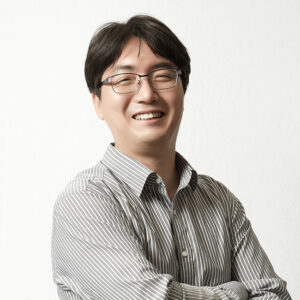Bioprinting technology enables the fabrication of computer-designed 3D microarchitectures consisting of multiple types of living cells, biomaterials, and biomolecules, making it possible to produce real organ/tissue-like cellular construct. Many researchers have reported that biomimetic design has a great effect not only on artificial tissue formations, but also on functional recovery of damaged organs. Our team is developing new 3D bioprinting systems and processes to build 3D precise cellular constructs with biomimetic architectures. Based on the technology, we are also conducting various studies on bio-applications such as artificial tissue/organ regeneration, wound healing, disease model, and body-on-a-chip.
Curriculum Vitae
- –2020 – : Associate Professor, Department of Biomedical Engineering, UNIST
- –2015 – 2020 : Assistant Professor, Department of Biomedical Engineering, UNIST
- –2013 – 2015 : Instructor. Wake Forest Institute for Regenerative Medicine
- –2009 – 2013 : Research Fellow. Wake Forest Institute for Regenerative Medicine
Academic Credential
- –2004 – 2009 : Ph. D. Mechanical Engineering, Pohang University of Science and Technology
- –2002 – 2004 : M.S. Mechanical Engineering, Pohang University of Science and Technology
Publication
- –Kang HW, Lee SJ, Ko IK, Kengla C, Yoo JJ, Atala A, “A 3D bioprinting system to produce human-scale tissue constructs with structural integrity” Nature Biotechnology, DOI : 10.1038/nbt.3413
- –Jeon S, Heo J-H, Kim MK, Jeong W, Kang HW, “High‐Precision 3D Bio‐Dot Printing to Improve Paracrine Interaction between Multiple Types of Cell Spheroids” Advanced Functional Materials, DOI : 10.1002/adfm.202005324

